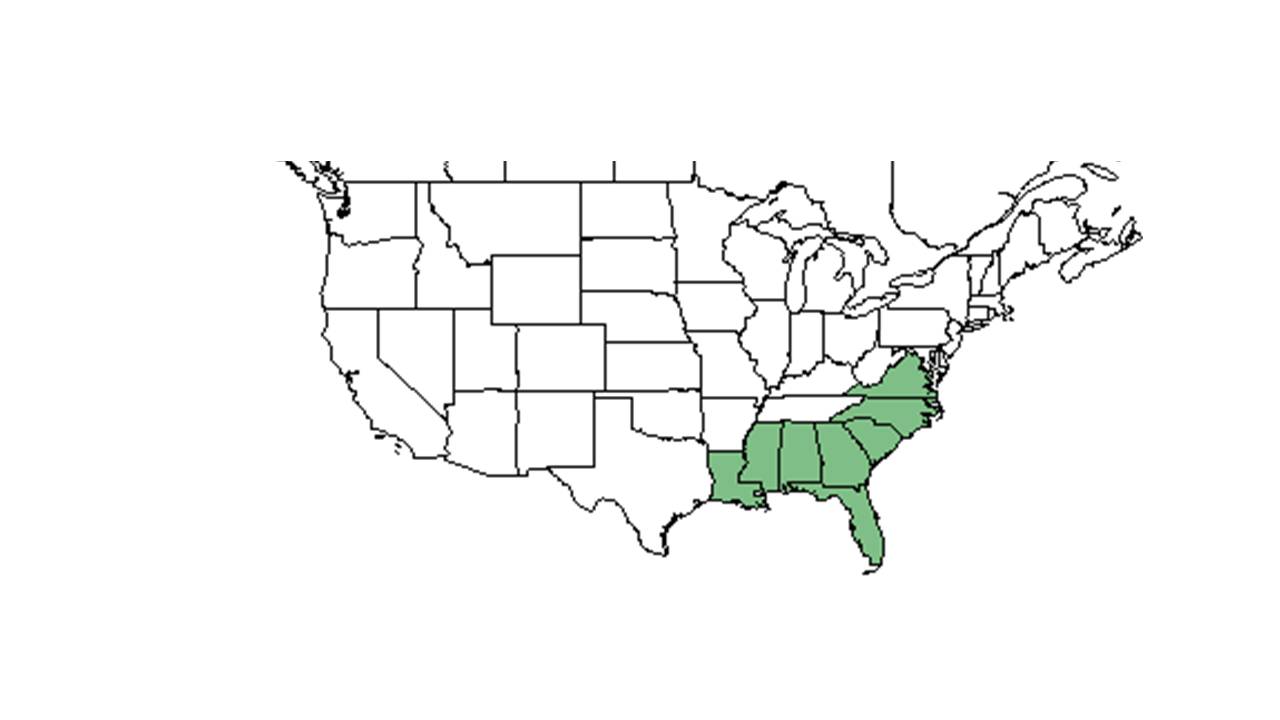Difference between revisions of "Physalis walteri"
KatieMccoy (talk | contribs) |
KatieMccoy (talk | contribs) |
||
| Line 26: | Line 26: | ||
===Habitat=== <!--Natural communities, human disturbed habitats, topography, hydrology, soils, light, fire regime requirements for removal of competition, etc.--> | ===Habitat=== <!--Natural communities, human disturbed habitats, topography, hydrology, soils, light, fire regime requirements for removal of competition, etc.--> | ||
''P. walteri'' has been observed to be growing naturally at beach dunes; longleaf pine flatwoods; a turkey oak/longleaf pine sandridge; sandy banks bordering salt marshes; a shaded pine plantation; a ''Serenoa'' scrub behind a beach sand dune ridge; longleaf pine and wiregrass upland; and slash pine flatwoods on limerock (FSU Herbarium). In human disturbed areas it has been documented to grow on plowed and vacant lots on or near the beach; roadsides near beaches; roadside ditches; in loamy soil of old fields, pastures and levees; lawns; and a clearing of a swamp forest (FSU Herbarium). Observed growing in dry loamy sand, loamy sand and calcareous soils (FSU Herbarium). | ''P. walteri'' has been observed to be growing naturally at beach dunes; longleaf pine flatwoods; a turkey oak/longleaf pine sandridge; sandy banks bordering salt marshes; a shaded pine plantation; a ''Serenoa'' scrub behind a beach sand dune ridge; longleaf pine and wiregrass upland; and slash pine flatwoods on limerock (FSU Herbarium). In human disturbed areas it has been documented to grow on plowed and vacant lots on or near the beach; roadsides near beaches; roadside ditches; in loamy soil of old fields, pastures and levees; lawns; and a clearing of a swamp forest (FSU Herbarium). Observed growing in dry loamy sand, loamy sand and calcareous soils (FSU Herbarium). | ||
| + | |||
Species associated with ''P. walteri'' include ''Tragia smallii, Pinus palustris, Physalis arenicola, Lobelia puberula,'', turkey oak, ''Sporobolus, Serenoa repens, Yucca, Lyonia, Lantana, Camara'', '' Carex hyalinolepis, Melica mutica, Aristida'', slash pine, and ''Helianthus debilis'' (FSU Herbarium). | Species associated with ''P. walteri'' include ''Tragia smallii, Pinus palustris, Physalis arenicola, Lobelia puberula,'', turkey oak, ''Sporobolus, Serenoa repens, Yucca, Lyonia, Lantana, Camara'', '' Carex hyalinolepis, Melica mutica, Aristida'', slash pine, and ''Helianthus debilis'' (FSU Herbarium). | ||
Revision as of 15:27, 18 September 2015
| Physalis walteri | |
|---|---|
Error creating thumbnail: Unable to save thumbnail to destination
| |
| Scientific classification | |
| Kingdom: | Plantae |
| Division: | Magnoliophyta - Flowering plants |
| Class: | Magnoliopsida – Dicotyledons |
| Order: | Solanales |
| Family: | Solanaceae |
| Genus: | Physalis |
| Species: | P. walteri |
| Binomial name | |
| Physalis walteri Nutt. | |

| |
| Natural range of Physalis walteri from USDA NRCS Plants Database. | |
Contents
Taxonomic notes
Common name: Walter's groundcherry
Description
Distribution
Ecology
Habitat
P. walteri has been observed to be growing naturally at beach dunes; longleaf pine flatwoods; a turkey oak/longleaf pine sandridge; sandy banks bordering salt marshes; a shaded pine plantation; a Serenoa scrub behind a beach sand dune ridge; longleaf pine and wiregrass upland; and slash pine flatwoods on limerock (FSU Herbarium). In human disturbed areas it has been documented to grow on plowed and vacant lots on or near the beach; roadsides near beaches; roadside ditches; in loamy soil of old fields, pastures and levees; lawns; and a clearing of a swamp forest (FSU Herbarium). Observed growing in dry loamy sand, loamy sand and calcareous soils (FSU Herbarium).
Species associated with P. walteri include Tragia smallii, Pinus palustris, Physalis arenicola, Lobelia puberula,, turkey oak, Sporobolus, Serenoa repens, Yucca, Lyonia, Lantana, Camara, Carex hyalinolepis, Melica mutica, Aristida, slash pine, and Helianthus debilis (FSU Herbarium).
Phenology
P. walteri is recorded to bloom April through August (FSU Herbarium).